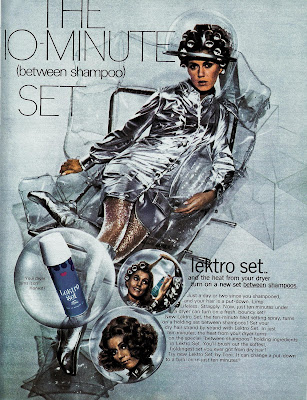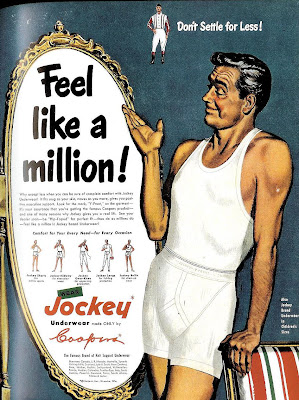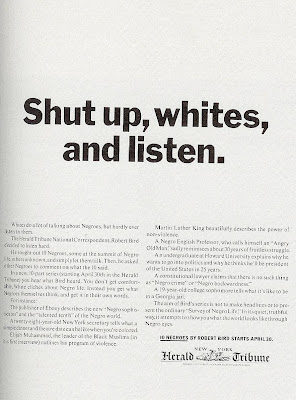Way-out fashion

Here's a futuristic hair product ad from 1969. And how do we know it's futuristic? Obviously, from the silvery apparel the model is wearing, based on the aluminum-coated nylon spacesuits of the Mercury U.S. Space Program (which was put the first human in orbit around the earth). Even though the Mercury Program (and its distinctive Mark IV space suits ) had ended 6 years earlier, the look was just too iconic to be simply cast aside for the bulkier more utilitarian-looking suits of the Gemini and Apollo programs. In fact, the Mercury look" was perfect for mid-'60s TV shows that wanted to seem other-worldly or futuristic. (That's "My Favorite Martian" and "Lost In Space," for you non-boomers.)





